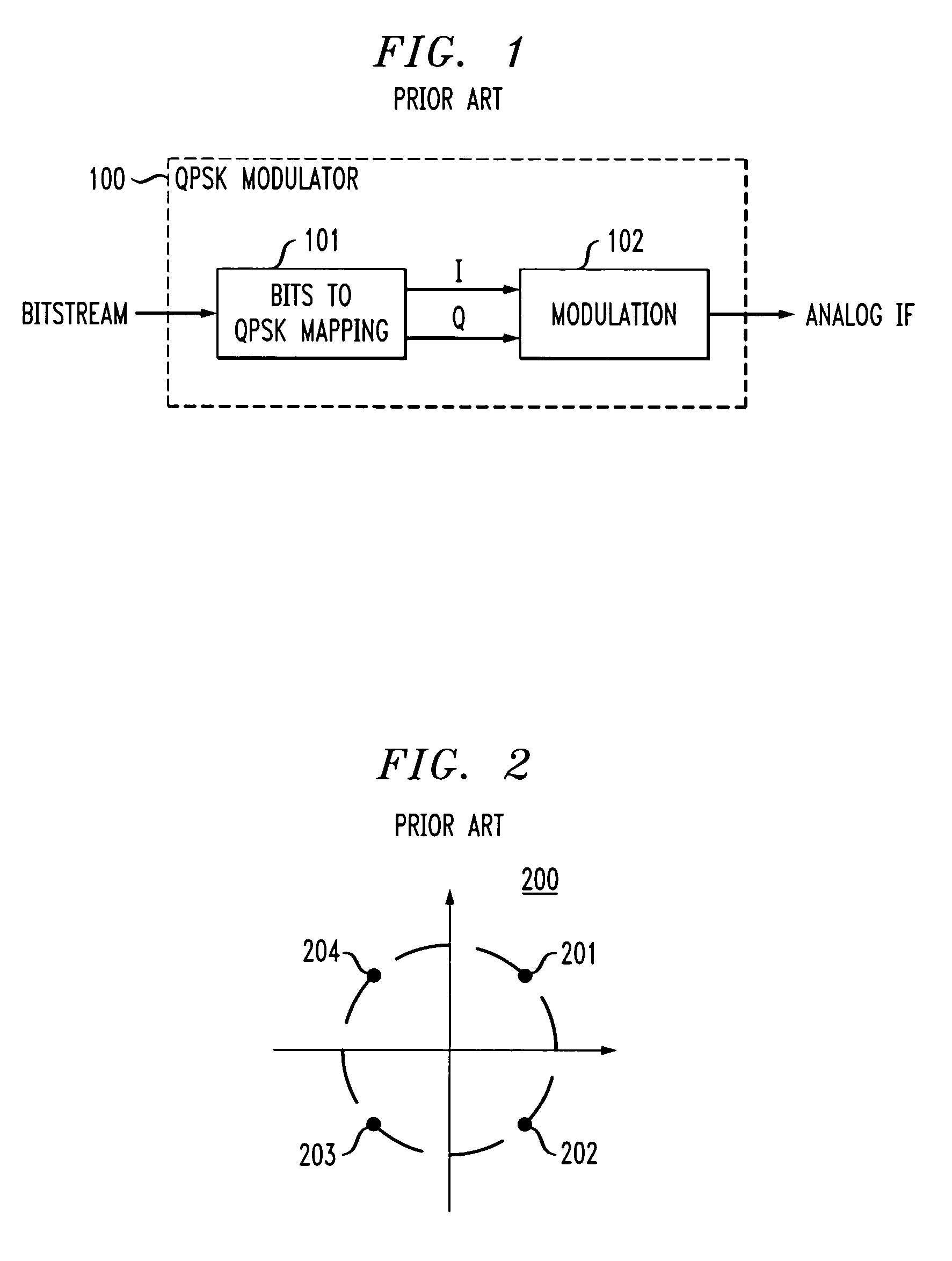Method and apparatus for adding auxiliary channels in an existing transmission system
a technology of auxiliary channels and transmission systems, applied in the field of communication systems, can solve the problems of prohibitive cost of replacing all existing receivers in the system, difficulty in adding such auxiliary channels, and reducing the rate of primary data, and achieve the effect of small nois
- Summary
- Abstract
- Description
- Claims
- Application Information
AI Technical Summary
Benefits of technology
Problems solved by technology
Method used
Image
Examples
Embodiment Construction
[0016]FIG. 1 shows, in simplified block diagram form, details of a prior known QPSK modulator 100. Specifically, shown are bits to QPSK Mapping Unit 101 and Modulation Unit 102.
[0017] In QPSK modulation, a cosine carrier is typically varied in phase while maintaining a constant amplitude and frequency. The term “quadrature” implies that there are four possible phases (4-PSK), which the carrier can have at a given time, as shown in FIG. 2 on the characteristic constellation. The four phases are labeled 201, 204, 203 and 202 corresponding to one of 45, 135, 225 and 315 degrees, respectively.
[0018] In QPSK, information is conveyed through phase variations. This is realized in Bits to QPSK Mapping Unit 101 where the input digital bitstream is mapped into the in-phase (I) and quadrature-phase (Q) components of the QPSK signal (the primary QPSK channel). The I component is the real part and the Q component is the imaginary part of the QPSK symbols. Specifically, in each time period, the...
PUM
 Login to View More
Login to View More Abstract
Description
Claims
Application Information
 Login to View More
Login to View More - R&D
- Intellectual Property
- Life Sciences
- Materials
- Tech Scout
- Unparalleled Data Quality
- Higher Quality Content
- 60% Fewer Hallucinations
Browse by: Latest US Patents, China's latest patents, Technical Efficacy Thesaurus, Application Domain, Technology Topic, Popular Technical Reports.
© 2025 PatSnap. All rights reserved.Legal|Privacy policy|Modern Slavery Act Transparency Statement|Sitemap|About US| Contact US: help@patsnap.com



